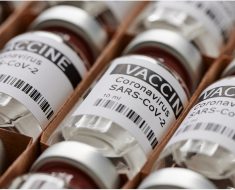
(HealthDay)—Has a high-fat meal ever left you feeling bloated and sluggish? It turns out that a heavier fat diet may keep the many bacteria that live in your digestive system from doing their best, too.
New research found that when people boosted their fat intake to 40 percent of their daily diet for six months, the number of “good” gut bacteria decreased while “unhelpful” bacteria amounts increased.
“The [study] result showed that a high-fat diet is linked to unfavorable changes in the type and numbers of gut bacteria—collectively known as the microbiome,” said the study’s senior author, Duo Li. He is chief professor of nutrition at the Institute of Nutrition and Health at Qingdao University in Qingdao, China.
In addition to changing the make-up of the microbiome, the study authors also noted an increase in inflammatory triggers in the body. These changes may contribute to the development of metabolic disorders, such as diabetes and heart disease, the researchers noted.
Nutritionist Samantha Heller, from NYU Langone Health in New York City, said bacteria living in the digestive system appear to have broad-ranging impacts on human health, and that they “eat what we eat.”
“Research suggests that they thrive on plant fibers—such as those found in fruits and vegetables, legumes, nuts and grains—and that the typical Western diet, which is rich in fat, red and processed meats, cheese, sweets, refined grains and fast-fried junk foods, in a sense, poisons them,” she explained.
In China, where the study was done, a traditional diet has been low in fat and high in carbohydrates. That, however, has been shifting to a diet higher in fat and lower in carbohydrates. At the same time, the rates of obesity and type 2 diabetes have also been rising, the study authors said.
To see if changes occur in the gut microbiome when people transition from a low-fat diet to a higher-fat diet, the researchers recruited about 200 young people, who weren’t obese, for the study. Their average age was about 23 years old.
Li said their average fat intake before the start of the study was about 31 percent.
The study volunteers were randomly placed into one of three groups for six months. One group ate a diet comprised of 20 percent fat, another ate 30 percent of their daily calories from fat, while the third had a 40 percent fat diet.
The researchers altered carbohydrate intake—things like rice and wheat flour—to make up for the changes in fat intake. The amount of fiber and protein in the diets stayed essentially the same.
All three groups had weight loss, but the lowest-fat group lost the most weight and had the greatest reductions in waist circumference, total cholesterol and bad cholesterol. The low-fat diet group also had an increase in gut bacteria that have been linked to lower cholesterol levels.
Those on the higher-fat fare had an increase in a different type of gut bug—one that’s been linked to higher cholesterol levels. Their diet was also associated with “significant” changes in long chain fatty acid metabolism, producing higher levels of chemicals that are thought to trigger inflammation.
Li said the findings may be relevant in developed countries where fat intake is high, but that further research needs to be done to see if similar changes occur in different populations.
“We suggest that fat intake for a general healthy population should not be more than 30 percent of total energy—at least in Asian populations,” Li said, and added that most fat should come from healthy fats, such as soybean, peanut or olive oil.
Nutritionist Heller said it’s important not to “interpret the findings of this study to suggest that dietary fat is unhealthy. We need to eat fats to be healthy, unsaturated fats in particular.”
But, she added, you can have too much of a good thing. “Fad diets rich in animal fats—such as ‘Keto’ or ‘Paleo’—over time, are likely to be deleterious to the gut microbiome and subsequently increase the risk of inflammation and chronic diseases,” Heller said.
To keep your microbiome happy and healthy, Heller recommended eating more vegetables, legumes, fruits, grains and nuts, while avoiding processed meats, limiting red meat and cheese, and balancing your intake of fats, carbohydrates and protein.
Source: Read Full Article





